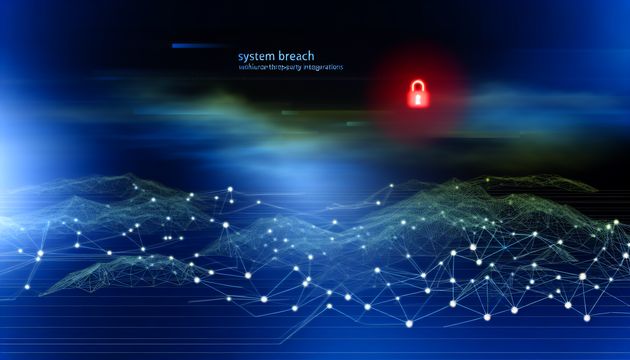
The Growing Threat of SMS Phishing Scams
SMS phishing, or “smishing,” is rapidly becoming a major concern in our increasingly mobile world, taking advantage of the widespread use of smartphones to trick users into revealing sensitive information. CTM360 reports a worldwide increase in these scams, which transcend regional boundaries and are part of a coordinated global effort. These attacks often use tactics of urgency and fear, such as warnings about expiring reward points or overdue toll payments, to pressure victims into quick decisions. The sophistication of these scams is further enhanced by tools like the Darcula Suite, a Phishing-as-a-Service platform that allows for the swift creation of phishing sites (source). As smishing continues to evolve, it presents significant challenges to mobile device security, necessitating comprehensive strategies to mitigate its impact.
The Rise of SMS Phishing Scams
Global Surge in SMS Phishing
The rise of SMS phishing, also known as “smishing,” has become a significant concern globally. According to CTM360, the proliferation of SMS-based phishing campaigns is not confined to a single region but is a coordinated international effort. The campaigns are designed to steal sensitive financial data from individuals worldwide, exploiting the pervasive use of mobile devices for communication and transactions.
The smishing attacks are characterized by their use of urgency and fear to manipulate victims. For instance, messages often claim that reward points are expiring or that toll payments are overdue, prompting recipients to act quickly without considering the legitimacy of the message. This tactic has proven effective, leading to a substantial number of individuals falling victim to these scams.
Technological Advancements in Phishing Platforms
At the core of these SMS phishing campaigns is the Darcula Suite, a sophisticated Phishing-as-a-Service (PhaaS) platform. This platform, built using React and Docker, enables cybercriminals to launch phishing sites rapidly, often in under ten minutes (source). The Darcula Suite supports multi-channel SMS delivery, including iMessage and RCS, which makes detection more challenging and allows for the easy scaling of attacks across different regions.
The platform’s capabilities include centralized campaign management, allowing multiple attacker accounts to run parallel campaigns. It also features live victim logging, capturing IP addresses, device information, user agents, and form data in real-time. This level of sophistication demonstrates the evolving nature of phishing attacks and the increasing difficulty in combating them.
Impact on Mobile Device Security
The prevalence of smishing has significant implications for mobile device security. As of 2023, SMS phishing accounted for approximately 28% of all phishing attacks, and nearly 40% of mobile device threats were credential-phishing via SMS (source). This highlights the vulnerability of mobile devices to phishing attacks and the need for enhanced security measures.
The rise of non-SMS channels for smishing attacks further complicates the security landscape. For example, attacks through popular messaging platforms like KakaoTalk now constitute 39.6% of all smishing attacks (source). This shift underscores the need for comprehensive security solutions that address multiple communication channels.
Economic and Social Consequences
The economic impact of SMS phishing is considerable. In 2020, the Internet Crime Complaint Center (IC3) reported over 240,000 victims of phishing, smishing, vishing, and pharming, resulting in losses exceeding $54 million (source). The average financial damage from smishing is estimated at $800 per individual globally.
Beyond the financial losses, smishing also poses social challenges. The deceptive nature of these scams erodes trust in digital communication and can lead to broader societal impacts, such as reduced confidence in online transactions and increased skepticism towards legitimate communications from businesses and government agencies.
Strategies for Mitigation and Prevention
Addressing the rise of SMS phishing requires a multi-faceted approach. Public awareness campaigns are crucial in educating individuals about the risks of smishing and how to identify potential scams. According to Keepnet Labs, only 23% of users over 55 can correctly define smishing, highlighting the need for targeted educational efforts.
Technological solutions also play a vital role in mitigating smishing attacks. The development and deployment of advanced security software that can detect and block phishing attempts are essential. Additionally, businesses and service providers must implement robust authentication measures, such as multi-factor authentication, to protect user accounts from unauthorized access.
In conclusion, the rise of SMS phishing scams presents a significant challenge that requires a coordinated response from individuals, businesses, and governments. By raising awareness, enhancing security measures, and fostering collaboration among stakeholders, it is possible to mitigate the impact of these scams and protect individuals from financial and personal harm.
Final Thoughts
The persistent rise of SMS phishing scams underscores the need for a multifaceted approach to cybersecurity. As highlighted by Keepnet Labs, public awareness and education are crucial in combating these threats, especially given the low awareness among older demographics. Technological advancements in security software and robust authentication measures are equally important in protecting users from these sophisticated attacks. The economic and social impacts of smishing are profound, with significant financial losses and erosion of trust in digital communications. By fostering collaboration among individuals, businesses, and governments, and by leveraging emerging technologies, it is possible to reduce the prevalence of these scams and safeguard personal and financial information.
References
- CTM360 tracks global surge in SMS-based reward and toll scams. (2023). BleepingComputer. https://www.bleepingcomputer.com/news/security/ctm360-tracks-global-surge-in-sms-based-reward-and-toll-scams/
- SMS phishing campaigns surge worldwide: PointyPhish and TollShark exploit urgency to steal financial data. (2023). UnderCode News. https://undercodenews.com/sms-phishing-campaigns-surge-worldwide-pointyphish-and-tollshark-exploit-urgency-to-steal-financial-data/
- Phishing statistics & industry trends. (2023). ControlD. https://controld.com/blog/phishing-statistics-industry-trends/
- Smishing statistics: The latest trends and numbers in SMS phishing. (2023). Keepnet Labs. https://keepnetlabs.com/blog/smishing-statistics-the-latest-trends-and-numbers-in-sms-phishing



